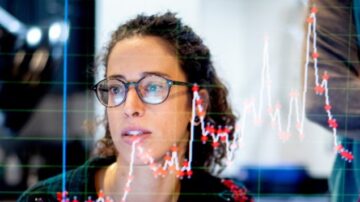With the 2022 Nobel prizes due to be announced, Physics World editors look at the physicists who’ve won prizes in fields other than their own. Here, Tami Freeman examines two medical imaging breakthroughs that led to physicists winning the Nobel Prize for Physiology or Medicine.
Physicists have always had an interest in biological and medical physics, with Francis Crick and Maurice Wilkins famously sharing the 1962 Nobel Prize for Physiology or Medicine for elucidating the structure of DNA (along with the biologist James Watson).
But two other huge breakthroughs in medical physics – the introduction of X-ray computed tomography (CT) and magnetic resonance imaging (MRI) – also won their inventors a physiology or medicine Nobel prize.
Tackling tomography theory
Even before Wilhelm Roentgen won the first-ever Nobel Prize for Physics in 1901 for discovering X-rays, we’ve known that they can be used to image the interior of the body. They rapidly led to the introduction of a range medical applications; but it was the development of CT scanning – in which X-rays are sent through the body at different angles to create cross-sectional and 3D images – that vastly expanded the potential of medical X-ray imaging.
That work was recognised in 1979 when the physicist Allan Cormack was awarded the Nobel Prize for Physiology or Medicine “for the development of computer assisted tomography”, an honour he shared with engineer Godfrey Hounsfield.
Born in Johannesburg, South Africa, Cormack had been intrigued by astronomy at an early age. He then went on to study electrical engineering at the University of Cape Town but after a couple of years abandoned engineering and turned to physics. After completing a BSc in physics and an MSc in crystallography he moved to the UK to work as a doctoral student at Cambridge University’s Cavendish Laboratory. Cormack returned to Cape Town as a lecturer and, following a sabbatical at Harvard University, in 1957 became assistant professor of physics at Tufts University in the USA. Unusually for a Nobel laureate, Cormack never actually earned a PhD.
At Tufts, Cormack’s main pursuits were nuclear and particle physics. But when he had time, he pursued his other interest – the “CT scanning problem”. He was the first, from a theoretical point of view, to analyse the conditions for demonstrating a correct radiographic cross-section in a biological system.
Having developed the theoretical underpinnings of tomographic image reconstruction, he published his results in 1963 and 1964. Cormack noted that at that time, “there was practically no response” to these papers, so he continued his normal course of research and teaching. In 1971, however, Hounsfield and colleagues built the first CT scanner and interest in CT scanning escalated.
What’s interesting is that Cormack and Hounsfield built a very similar type of device without collaboration, in different parts of the world. Thanks to their independent efforts, CT scans are now ubiquitous in modern medicine, employed for applications such as disease diagnosis and monitoring, as well as guiding tests such as biopsies or treatments such as radiation therapy.
The emergence of MRI
The next Nobel Prize for Physiology or Medicine to go to a physicist was in 2003 when Peter Mansfield was recognised (along with the US chemist Paul Lauterbur), for “discoveries concerning magnetic resonance imaging”, which paved the way to modern MRI. The technique provides clear and detailed visualization of internal body structures and is now routinely used for medical diagnosis, treatment and follow-up. Crucially, unlike X-ray-based scans, MRI does not expose the subject to ionizing radiation.

Mansfield originally studied physics at Queen Mary College in London, where his graduate research focused on building a pulsed nuclear magnetic resonance (NMR) spectrometer to study solid polymer systems. After receiving his PhD in 1962, he undertook further NMR research at the University of Illinois at Urbana–Champaign, before returning to the UK to take up a lectureship at Nottingham University (where he worked until his retirement in 1994).
Mansfield’s PhD and postdoc led him to the idea of using NMR for human imaging (a technique originally called nuclear magnetic resonance imaging, but soon rebadged as just MRI to avoid alarming patients). And it was during his time at Nottingham that Mansfield made some of the key breakthroughs leading to his Nobel prize.
In the mid-1970s, Mansfield produced the first MR images of a live human subject: the finger of one of his research students. His team went on to develop a whole-body MRI prototype, which he volunteered to be the first to test. Despite fellow scientists cautioning that it may be potentially dangerous, Mansfield was “fairly convinced there would not be a problem”.

Breaking boundaries: how the physicist Ernest Rutherford won the Nobel Prize for Chemistry
As for Lauterbur, he discovered that introducing gradients in the magnetic field made it possible to create two-dimensional images of structures that could not be visualized by other techniques. Mansfield further developed the use of gradients, showing how the detected signals could be mathematically analysed and transformed into useful images. He is also credited with discovering how to drastically reduce MRI scanning times, using the echo-planar imaging technique.
These days tens of millions of MRI exams are performed each year around the world, and in 1993, Mansfield was knighted for his services to medical science. There’s even a beer (the 4.2% ABV Sir Peter Mansfield ale) named in his honour.













